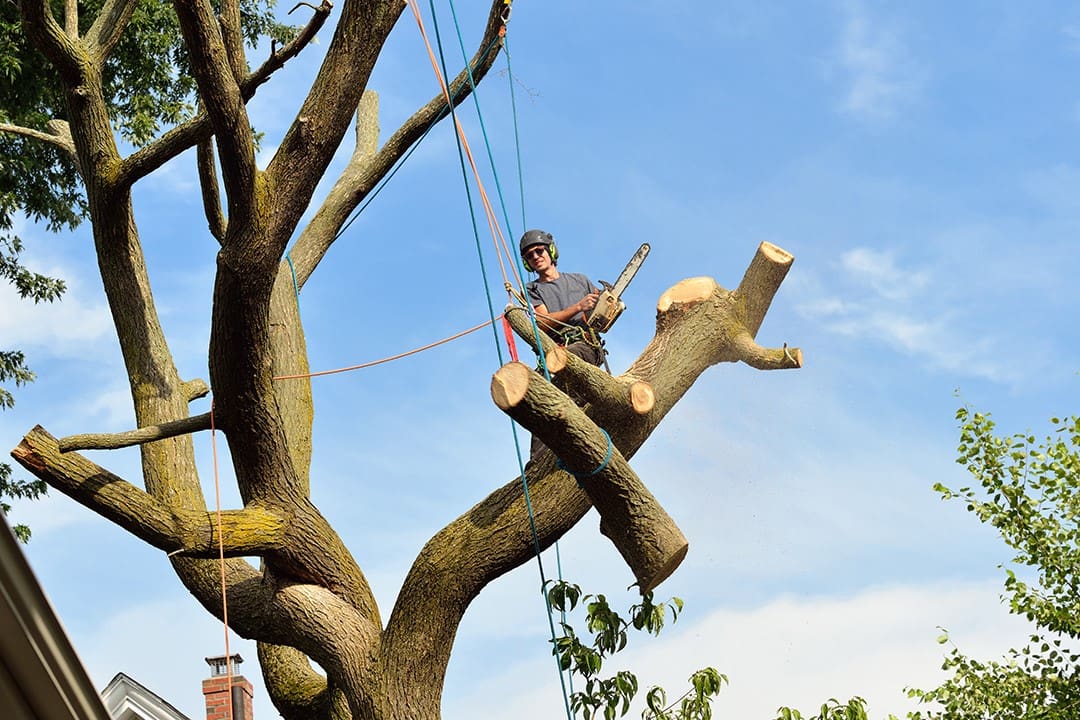Safety and Regulations
Top Strategies for Successful Autumn Tree Care


As an arborist, I’ve witnessed the wonders of autumn firsthand. The crisp air, vibrant colors, and falling leaves create a sense of nostalgia and belonging.
But amidst this beauty, it’s crucial to care for our trees. That’s why I’m here to share the top strategies for successful autumn tree care.
From timing and pruning techniques to soil preparation and pest prevention, these tips will ensure your trees thrive throughout the season.
So let’s dive in and keep our trees healthy and vibrant!
Timing and Importance
When should I prioritize autumn tree care to ensure its success?
Timing and importance play crucial roles in the overall health and wellbeing of your trees. The best time to focus on autumn tree care is during the dormant season, which typically occurs between late fall and early winter. This is when trees aren’t actively growing and are more resilient to pruning, watering, and other maintenance activities.


By prioritizing tree care during this period, you can promote better growth, increase resistance to pests and diseases, and improve overall tree vitality. It’s essential to understand that each tree species has its specific needs, so it’s recommended to consult with a professional arborist to develop a customized care plan.
Now, let’s delve into the next section, which explores pruning and thinning techniques for optimal autumn tree care.
Pruning and Thinning Techniques
To continue improving the health and vitality of your trees during the dormant season, it’s important to incorporate effective pruning and thinning techniques.
Pruning involves removing dead, diseased, or damaged branches, which not only improves the appearance of your trees but also promotes new growth. Thinning, on the other hand, involves selectively removing branches to improve air circulation and reduce overcrowding. This allows more sunlight to reach the lower branches and encourages overall tree health.
When pruning, make clean cuts just outside the branch collar to prevent disease entry. It’s crucial to use the proper tools and techniques to avoid damaging the tree.
Regular pruning and thinning can help your trees thrive and maintain their structural integrity, providing a beautiful and inviting environment for your desired sense of belonging.
Soil Preparation and Fertilization
I’ll prepare the soil and fertilize the trees to ensure their optimal health and growth this autumn. Here are some key strategies to keep in mind:


- Amending the soil: Adding organic matter such as compost or aged manure improves soil structure and nutrient content, providing a healthy environment for tree roots to thrive.
- Testing the soil: Conduct a soil test to determine its pH level and nutrient deficiencies. This will help you choose the appropriate fertilizer and make necessary adjustments.
- Choosing the right fertilizer: Select a slow-release fertilizer specifically formulated for trees. This ensures a steady supply of nutrients over time and prevents excessive growth spurts.
- Applying the fertilizer: Spread the fertilizer evenly around the tree’s drip line, avoiding direct contact with the trunk. Water thoroughly after application to help nutrients penetrate the soil.
- Mulching: Apply a layer of organic mulch around the base of the tree, but be sure to keep it away from the trunk. This helps retain moisture, suppress weeds, and improve soil health.
Pest and Disease Prevention
Continuing with our focus on autumn tree care, it’s important to regularly and proactively prevent pest and disease issues. By taking preventative measures, we can ensure the health and longevity of our trees.
One effective strategy is to inspect trees regularly for signs of pests or diseases, such as leaf discoloration, wilting, or unusual growth patterns.
It’s also crucial to maintain proper tree hygiene by removing any fallen leaves or debris that may harbor pests or diseases.
Additionally, applying organic pest control methods, such as neem oil or insecticidal soap, can help to deter pests without harming the environment.
By being vigilant and proactive in our pest and disease prevention efforts, we can protect our trees and promote a thriving ecosystem.
Now, let’s transition to discussing winter protection measures.
Winter Protection Measures
As I regularly inspect my trees for signs of pests or diseases, I also take proactive winter protection measures to ensure their health and survival. Here are some essential winter protection measures that I implement:


- Mulching: I apply a layer of organic mulch around the base of the tree to insulate the roots and retain moisture.
- Wrapping: I wrap the trunks of young or vulnerable trees with burlap or tree wraps to protect them from harsh winter winds and temperature fluctuations.
- Watering: I make sure to water my trees adequately before the ground freezes to prevent dehydration.
- Pruning: I prune any damaged or weak branches to reduce the risk of breakage from heavy snow and ice.
- Anti-desiccant spray: I spray an anti-desiccant solution on the leaves and branches to minimize water loss during the winter months.


Hello there! I’m Logan Foster, the green-thumbed social media marketer behind the vibrant world of 1800TreeGuy.com. With roots firmly planted in arboriculture, I’ve branched out to help clients cultivate their dream outdoor spaces, one leafy canopy at a time. My knack for nurturing nature is more than a profession—it’s a way of life.
When I’m not talking trees and teaching the art of arboreal care, you can find me cheering on the Bulldogs—my alma mater’s pride and my forever team. My environmental studies there didn’t just teach me about ecosystems; they instilled a lifelong passion for protecting our planet.
Off the clock, I’m an adventurer at heart. Whether it’s trekking the Appalachian trails, pedaling down a mountain path, or crafting guides to share the wonders of the wild, I’m happiest with soil under my nails and the sun on my face. And let’s not forget Yoda, my pug sidekick. He may not have mastered the art of stillness, but his joyful grins are my daily dose of happiness.
I’m all about making connections—between people and the great outdoors and between my clients and their ideal landscape visions. My approach is personal; every tree has a story, and every garden reflects its caretaker.
If you want to green your scene or share in my outdoor escapades, give me a shout on Instagram or Facebook. Let’s cultivate a conversation and grow a community rooted in a love for the lush life.







